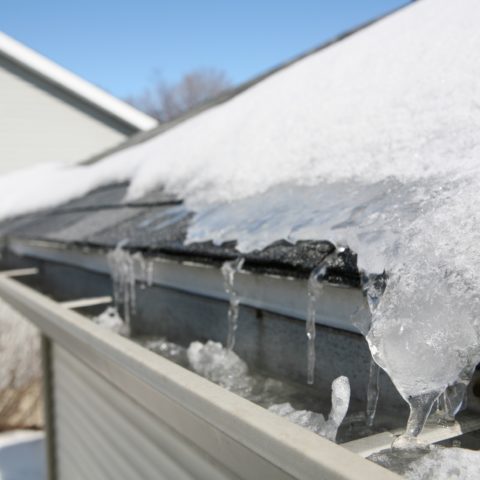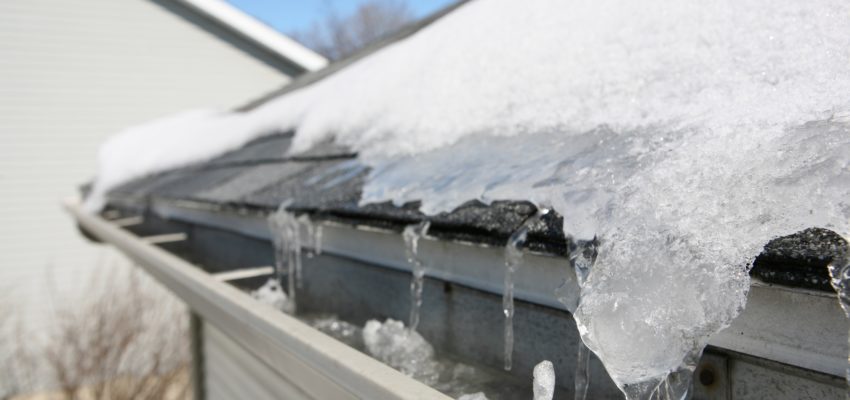This last Winter proved that the risk of severe snow and cold is increasing. Winter time should be spent safely inside, not battling roof damage from icicles or pesky leaks caused by wear and tear, frozen gutters, and ice dams. You may be asking yourself; how do I stop my roof from leaking this coming winter?
Let’s look at some of the causes behind wintertime roof leaks and how you can prevent them.
The Main Causes of Leaky Roofs
While there are many circumstances that could cause a roof to leak, especially in cold weather, leaks usually occur due to at least one of these four key reasons:
- Ice dams: Snow builds up on roofs and then melts. The rate of melting will increase if the temperature rises if the snow is exposed to direct sunlight, or if there is excess heat loss through the roof due to poor insulation. Most of the meltwater runs off the roof but when temperatures drop, the water freezes. The freezing runoff can create ridges of ice. As this process repeats itself, the ridges get taller, stopping more water from running down and off the roof. As more water builds up on the roof, refreezes, and expands, it can begin to work its way up under roof coverings, causing water to penetrate the waterproofing system. This can happen to any roof, new or old, in certain conditions.
- Damaged roofing systems: Cracks or holes in a roof can be hard to spot without a proper inspection. When small rainstorms don’t lead to leaks, it can be easy to assume that your roof is fully protected. However, issues with roof seams and damaged shingles can lead to leaks during winter that need an immediate fix, especially if ice forms in those areas and expands.
- Clogged gutters: It’s not just roofs that need to be protected in winter – gutter systems are also at risk for problems. If gutters become clogged with leaves, sticks, and other debris, it can lead to ice and water buildup. A large buildup of ice can even become heavy enough to pull the gutters right off of the roof.
- Cracked membranes and flashing issues: Roof flashing is installed on roofs to direct water away from critical areas such as where the plane of a roof meets a wall or a chimney. Because winter snow doesn’t always fall vertically, it can enter cracks in the flashing and lead to water inside the building. The same is true for any problems with your roofing membranes.
How Do I Stop my Roof from Leaking?
The first thing you should do to prevent roof leaks is to perform an inspection. Spring is the perfect time for roof inspection, repair and upgrades. Take note of any problems and plan corrective actions before next winter.
Once your inspection is complete, take measures to repair any cracks, holes or other damage. You can also take additional measures such as replacing insulation in attic spaces or having your gutters and downspouts cleared professionally. Many of these actions may need to be repeated throughout the year to ensure complete protection.
Another thing to consider is the typical state of your roof and gutter system each winter. If you have noticed that your roof and gutters tend to have a buildup of icicles in the winter, it’s an indication that ice dams could become a problem. Improving the insulation in the roof can help slow the melting/re-freezing cycle but this may not be practical and it may not fully address the problem. This is where a roof & gutter de-icing system comes in.
Are There Long-Term Solutions?
Self-regulating roof and gutter snow-melting and de-icing systems maintain a continuous path for meltwater to run off of the roof, down the gutter system, and away from your building.
Self-regulating heating cables are designed to handle severe weather, such as high wind speeds, low temperatures, heavy snow loads, and high UV exposure. These systems are also compatible with all common roofing materials.
Even in non-traditional or complex roofing systems, there is usually an option to protect roofs and keep ice melting.
Interested in learning more about how you can install a self-regulating roof and gutter snow-melting and de-icing system? Check out our commercial options and view our new introductory video!


